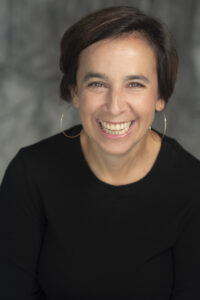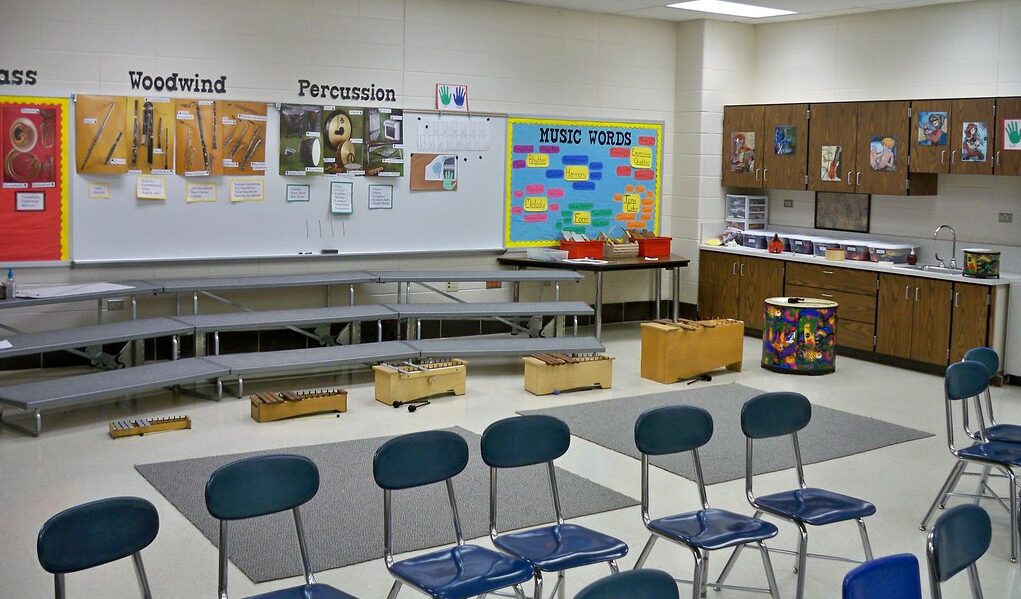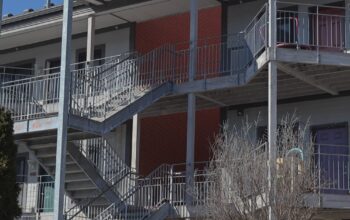Focus on academic disciplines can keep students from participating the arts
Music can have powerful, transformative effects on the lives of students when integrated into school curriculum.
Studies have shown that K-12 students who take music education during their time in school are nearly 20 percent more likely to graduate on time and 10 percent more likely to attend school each day. But opportunities students have often depend on what schools can offer and the academic pressure some face to focus on schoolwork.
Many of the composers taught in traditional early music courses, such as Bach, Beethoven and Mozart, are white men. Outside of this, educators do little to diversify their courses to match the interests of a wider swath of students.
Madison West High School music teacher Anthony Cao, who holds a master’s degree in music education from the University of Wisconsin–Madison, said that a growing number of music educators believe that their course offerings are becoming less applicable to students of color due to a receding interest in their classes.
“I hear that tossed around a lot. I hear that the students of color are not interested in traditional school music education, traditional meaning band, choir, orchestra, that model,” Cao said. “That’s a dangerous oversimplification.”
Cao became the first teacher to implement a hip-hop studies curriculum into his classroom, something he says has begun to attract the interest of a more diverse student population.
“Just by introducing [hip-hop studies] might be more relevant to kids, but it’s not an immediate fix,” he said. “It still has to be taught well by somebody who values the culture and values the art form.”
One reason for this misconception, Cao said, is the growing focus on college preparedness in high schools and how it’s pushing students of all identities away from music. As college admissions continue to grow more competitive each year, educators are pressuring students to focus more on advanced level coursework like Advanced Placement and honors classes.
That dynamic is present in the Madison Metropolitan School District with the Advancement Via Individual Determination program, a learning progression that stresses college preparedness in high school. The AVID program, Cao said, is increasingly marketed toward students of color, making those students less likely to take advantage of music courses even if they are interested in them.

“Part of [the problem] is scheduling, because programs like AVID targeting first-generation college-bound kids are usually targeting a large percentage of students of color,” Cao said. “These students are almost ruled out of high school music all four years of high school because the room in the schedule simply isn't there.”
Outside of school, students begin to see even more barriers between them and music lessons. When considering the cost of private lessons combined with the need for transportation to and from events, music begins to seem more out of reach for students of color.
“Part of [the problem] is access to private lessons because race in our community is so intertwined with socioeconomic status, so that students of color typically can’t afford lessons and the summer camps and these other opportunities to keep developing their skills as they get older,” Cao said. “These are experiences that would really help them thrive in a high school music program.”
At Lincoln Elementary, in the Madison Metropolitan School District, students speak five different primary languages and over 60% qualify for the free and reduced lunch program. These factors often make it difficult for students to take advantage of music opportunities outside of class time, Principal Deborah Hoffman said.
“Private lessons for [music] require somebody to drive somebody to a lesson,” Hoffman said. “If you think about somebody taking piano lessons or violin lessons when they’re in kindergarten, that requires a parent not to be working second shift, it requires transportation and money. I don’t think it’s a lack of interest, sometimes it’s just an income thing.”
Based on faculty and parent feedback, Lincoln Elementary began offering its students optional half-hour music lessons twice a week in a variety of subjects such as West African dance or traditional choir. In fifth grade, they are also given compulsory strings lessons two hours each week, including free use of instruments such as a cello, viola or violin.
Lincoln started the curriculum in 2010 and has made alterations since then. These course offerings, Hoffman said, are enjoyed widely by Lincoln students of all racial backgrounds.
Some educators are calling for schools to rethink how they offer arts during the school day altogether. Erica Halverson, author of the new book “How the Arts Can Save Education,” which examines how arts can change the way we teach complex subjects like math and science, said the way programs such as AVID place stress on empirical measures of intelligence can have detrimental effects on the racial climate in schools.
“If we continue to value the outcomes of reading and math tests as markers of intelligence and good learning, we will continue to generate a racist set of ideas of what school is and should be and what learners are and should be,” Halverson said.
Halverson is a professor at the University of Wisconsin–Madison who focuses on the arts and the way they can be brought into the classroom. Her artist-in-residence project Whoopensocker works with Madison Public Schools to innovate classroom instruction through various forms of student art creation.
“The system’s devaluing of arts puts pressure on families to get their kids into the experiences that the district has said it values,” Halverson said. “There is a system level disconnect there.”
The arts represent many of the core tenets that educators ask of students in science and math, Halverson’s book argues. Art teachers ask their students to identify a core idea from a complex topic, understand it and then represent it in a new and personalized way, a framework that can be applied to disciplines beyond the arts.
“The way in which people learn to make art is the model in which we expect successful students to be at the top, regardless of what they’re learning,” Halverson said.





